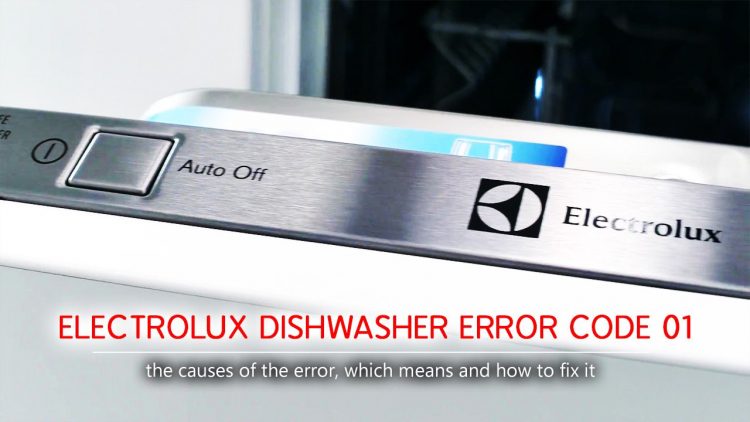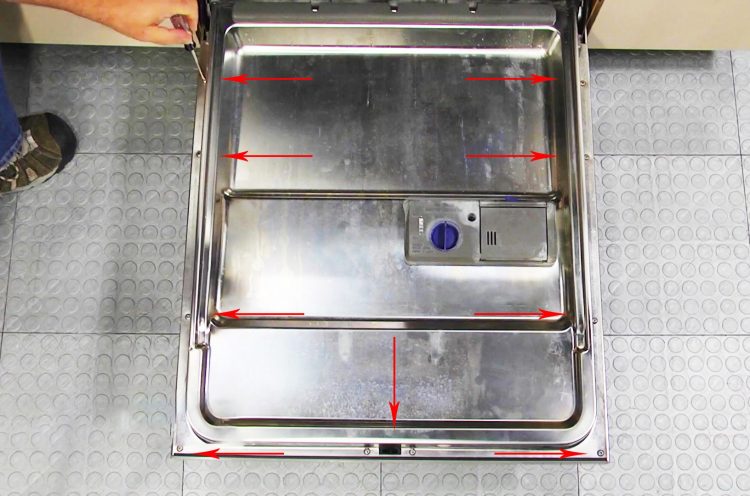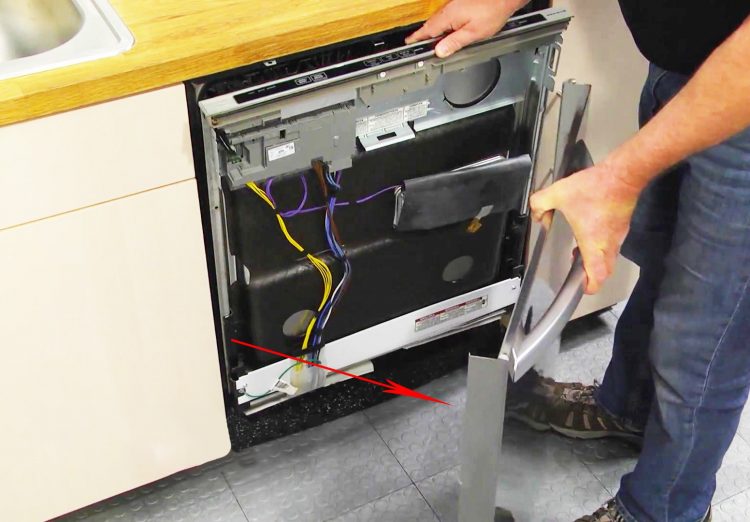Error code 1 (or 01) often appears on the display of the Electrolux dishwasher. This error indicates that there is a water leak in one of the system elements. Leakage of water from a dishwasher is a fairly common problem, which must be urgently solved.
How to solve the problem if error code 1 appears in the Electrolux dishwasher
It must be noted that the reasons for the problem of appearance can be very diverse. So, firstly, disconnect the appliance from the voltage. Also turn off the “Start” button.
- If water leakages from the lower part, the problem may be caused by a break in the nozzle or its loose connection. Such a problem occurs when the appliance is used for a long time. The branch pipe must be replaced, and the connection must be tightened.
- If water flows through the door, this malfunction may occur because the dishwasher is not properly installed properly. Also, the problem may be caused by the contamination of the door seal (it does not close properly). To solve the problem, clean the seal or replace it.
- In addition, water can also flow through the drain valve. To fix this, you have to place a special device in the drain hose.
- Water can flow from the ventilation holes. The problem can be solved by cleaning these parts.
- Breakage of the water chamber.
Eliminate water leakage through the door
So, water leakage through the dishwasher’s door is the most common and easily solvable problem. To fix the problem, open the door and tear off the old rubber band around the perimeter of the device with your hands. It’s easy, even a child can handle this task.
Now take a new rubber, appropriate for a specific model of a dishwasher. It means that there are particular sealants for the Electrolux machines, and other ones are used for AEG devices. Insert the elastic band in the place from which you pulled out the old one, gently moving along the perimeter of the device.
Please note! If the seal is too long, then it should be cut with scissors. In addition to the seal around the perimeter of the machine itself, there is also the same one at the door bottom.
The instruction of the element replacement on the example of the Electrolux dishwasher:
- Open the door and unscrew the bolts around the perimeter.
- Close the door and remove the front panel.
- Then open the door, remove the lower basket for the dishes, and carefully pull out the rubber using tweezers at the bottom of the door.
- Then take a new seal and insert it the way to make the end strictly aligned with the edge of the tank. When refilling the seal on the door until it stops, make sure that it suits the groove, and then screw the panel to the door.
Check the hoses and branch pipes
The leakage of water into the dishwasher tray, caused by a clog of sewage and a drainage system, is one of the possible reasons for error code 1 (or 01) in Electrolux dishwasher appearance. Therefore, it is necessary to regularly check and clean filters and hoses from food remain. It is not difficult to wash the filter that is located at the bottom of the tank. Remove the fine mesh and the glass and then wash everything under the running water. Instructions to any dishwasher (whether it’s Bosch or Electrolux) have details of the procedure for cleaning the machine from blockages.
To check the impermeability of the hose and the connection of the nozzles, it is necessary to look inside. To do this, turn the dishwasher upside down, remove the pallet, which is usually fastened to the bolts in the front, and the latches on the sides.
Under the pallet the inside parts are clearly seen. Check how tightly the hoses are connected to the device and, if necessary, replace the connecting clamps or the branch pipes.
How to replace the valve, water sensor, and sprinkler
Checking the nozzles, inspect the fill valve for rust. Having found this, immediately replace the detail. Open the dishwasher and find a filling valve. This element is not complicated to replace. Disconnect the sensors, branch pipes and put a new one in the place of the old valve, suitable for your model of the kitchen appliance.
In rare occasions, especially when the dishwasher is used for a long, plastic sprinkler exfoliates because of the water pressure that is supplied to the tank. As a result, water flows into the pallet and then protection system triggers. The sprinkler is the part that can be replaced. So, it is easy to buy a new one at the store or order on the Internet. To change it in the Electrolux dishwasher, you need to pull out the bottom basket for the dishes. Pull out the paddle sprinkler, which is held by snaps and located on the bottom. Use screwdrivers to remove it and install a new one.
Speaking about the water level sensor, it is located on the pallet, at the same place where the protection system against leaks called Aqua-stop is installed. In case of water leakage the valve either fails or bugs. Therefore, the water level signal does not get to the controller, the pump does not start, and the Aqua-stop protection activates. If there is a lot of water, it flows from the tray to the floor. The problem is solved by replacing the sensor.
What to do if the tank bursts?
It is a huge rarity when leakage occurs because of the tank burst. It happens when the dishwasher has been used for a long or there is a flow in production. In this case, it is best to contact a specialist who will assess the complexity of the work. Usually, in such situations, the repair turns into the purchase of a new dishwasher since fixing can be quite expensive.
Thus, the water leakage and error code 1 (or 01) in the Electrolux dishwasher is a problem that in most cases can be eliminated without the help of a specialist.





